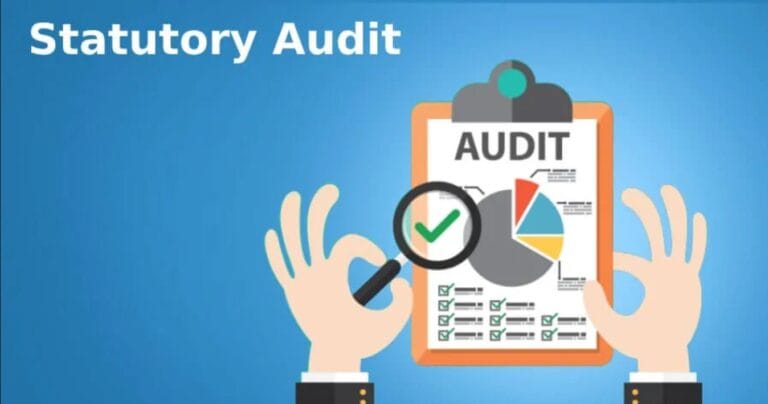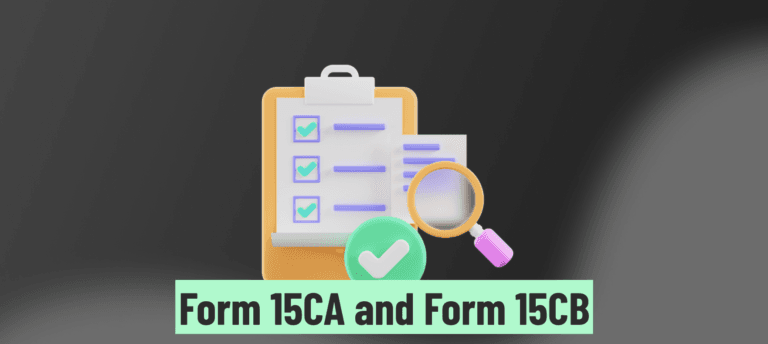The process of liquidation as provided under the IBC 2016 is of paramount importance. It is the method by which a company or an individual’s assets are sold off to repay creditors when the entity is insolvent and unable to meet its financial obligations. This comprehensive guide covers the objectives, types, key participants, stages, and best practices of the liquidation process.
Objectives of Liquidation
- Maximize Asset Realization: To sell off the assets of the debtor in a manner that maximizes their value.
- Settle Outstanding Debts: To repay creditors according to the priority of claims laid down in the IBC.
- Formal Winding Up: To formally close the business operations and legal existence of the corporate debtor.
- Transparency and Fairness: To ensure a transparent and fair process for all stakeholders involved.
Types of Liquidation
- Voluntary Liquidation: Initiated by the company itself when it is solvent and able to pay off all its debts but decides to wind up its operations for strategic or other reasons.
- Compulsory Liquidation: Initiated by creditors, shareholders, or the tribunal when the company is insolvent and unable to pay its debts.
Key Participants in Liquidation
- Corporate Debtor: The entity whose assets are being liquidated.
- Liquidator: An insolvency professional appointed to manage the liquidation process.
- Creditors: Entities to whom the debtor owes money.
- Adjudicating Authority: NCLT is with the adjudicating authority, vested with responsibility to oversees the liquidation process.
- Stakeholders: Includes shareholders, employees, and other parties with an interest in the liquidation process.
Stages of Liquidation
1. Initiation of Liquidation
- Triggering Events: Liquidation is triggered if the resolution plan is not approved within the CIRP period, or if the CoC decides to liquidate the corporate debtor.
- Application to NCLT: The resolution professional files an application to the NCLT to initiate liquidation.
2. Appointment of Liquidator
- Appointment by NCLT: The NCLT appoints a liquidator, who may be the resolution professional or another insolvency professional.
- Public Announcement: The liquidator makes a public announcement of the liquidation, inviting claims from creditors.
3. Verification of Claims
- Claims Collection: The liquidator collects claims from all creditors.
- Verification: The liquidator verifies the claims and prepares a list of creditors with the amount owed to each.
4. Formation of Liquidation Estate
- Asset Identification: The liquidator identifies and takes control of all assets of the corporate debtor.
- Asset Valuation: The assets are valued to determine their market value.
5. Sale of Assets
- Auction/Private Sale: Assets are sold through public auctions or private sales to maximize their value.
- Distribution of Proceeds: The proceeds received from the sale of the corporate debtor’s assets be distributed among the creditors, in accordance of the priority of claims, as specified in the IBC 2016.
6. Distribution of Proceeds
- Insolvency Resolution Process Costs: Paid first, including the fees of the liquidator.
- Secured Creditors: Paid next, followed by unsecured creditors, employees’ dues, and other stakeholders as per the waterfall mechanism.
7. Completion of Liquidation
- Final Report: The liquidator prepares a final report detailing the liquidation process and submits it to the NCLT.
- Dissolution Order: The NCLT passes a dissolution order, formally ending the existence of the corporate debtor.
Critical Aspects of Liquidation
1. Moratorium – Once the liquidation process starts, a moratorium is declared, staying all legal actions and proceedings against the corporate debtor.
2. Role of Liquidator – The liquidator, a key participant in the process, is entrusted with broad powers, including taking control of the corporate debtor’s assets, verifying claims, selling assets, and distributing proceeds. It is imperative that the liquidator acts impartially and in a transparent manner, there adhering to the highest standards of professional conduct and ethics.
3. Priority of Claims – The IBC prescribes a specific order of priority for the distribution of liquidation proceeds, known as the ‘waterfall mechanism.’ This mechanism ensures that certain creditors, such as secured creditors, are paid before others, thereby ensuring an orderly and fair settlement of claims.
4. Stakeholder Communication – Stakeholder Communication is a pivotal role of the liquidator. They ensure clear and transparent communication with all stakeholders, keeping them well-informed and actively involved in the process.
5. Legal Compliance – Legal Compliance is one of the crucial aspect in the liquidation process. The liquidator must ensure compliance with all legal and regulatory requirements, thereby upholding the integrity of the process.
Best Practices for Liquidation
- Efficient Asset Management: Ensure efficient management and disposal of assets to maximize their value.
- Transparency: Maintain transparency in all dealings and communications with stakeholders.
- Regular Updates: Keeping the creditors and other stakeholders, up to date, in respect of the progress of the liquidation.
- Professional Conduct: Ensure that the liquidator adheres to the highest standards of professional conduct and ethics.
- Timely Actions: Take timely actions to avoid unnecessary delays in the liquidation process.
Liquidation under the IBC is a structured process, providing a sense of security and predictability, designed to ensure that the assets of an insolvent entity are fairly and transparently sold off to repay creditors. The process aims to maximize asset value, ensure fair distribution of proceeds, and formally wind up the operations of the corporate debtor. By understanding the stages, key participants, and critical aspects of liquidation, stakeholders can navigate the process effectively and ensure compliance with legal requirements.
The liquidation process under the IBC is the legal procedure through which the assets of a corporate debtor are sold and the proceeds are distributed to its creditors. Liquidation occurs when the Corporate Insolvency Resolution Process (CIRP) fails to resolve the debtor’s insolvency or if the Committee of Creditors (CoC) decides that liquidation is the best option.
Liquidation can be initiated:
- If no viable resolution plan is approved during the CIRP.
- If the Committee of Creditors (CoC) decides to liquidate the company during the CIRP.
- If the NCLT rejects the approved resolution plan or if the corporate debtor violates the resolution plan.
- If the corporate debtor voluntarily applies for liquidation by passing a special resolution in a general meeting.
A Liquidator is appointed to manage the liquidation process. If the company was already undergoing a CIRP, the Resolution Professional (RP) usually becomes the Liquidator, unless the NCLT appoints someone else. The Liquidator is responsible for taking control of the corporate debtor’s assets, evaluating them, selling them, and distributing the proceeds to the creditors in accordance with the IBC.
The Liquidator’s duties include:
- Taking control of all the assets of the corporate debtor.
- Valuing and selling the assets.
- Settling claims from creditors by inviting and verifying their claims.
- Distributing proceeds as per the liquidation waterfall under Section 53 of the IBC.
- Representing the corporate debtor in any ongoing legal proceedings.
- Filing reports with the NCLT about the progress of the liquidation.
As per the IBC, the liquidation process should be completed within one year from the date of commencement. However, in practice, this timeline may vary depending on the complexity of the case and the quantum of assets to be liquidated. In case of delays, the Liquidator can seek an extension from the NCLT.
During liquidation, the Liquidator takes control of all the assets of the corporate debtor. The assets are valued and sold either as a going concern or in piecemeal. The proceeds from the sale are distributed to creditors as per the waterfall mechanism under Section 53 of the IBC.
The waterfall mechanism is a statutory hierarchy prescribed under Section 53 of the IBC for distributing the proceeds of liquidation. The order of priority is:
- Insolvency resolution process costs and liquidation costs.
- Secured creditors (who have relinquished their security) and workmen’s dues for the preceding 24 months.
- Employee dues (other than workmen) for the preceding 12 months.
- Unsecured financial creditors.
- Government dues and remaining secured creditors (for unpaid amounts).
- Operational creditors.
- Equity shareholders and partners (residual claimants).
During liquidation, the company ceases operations, and employees may be terminated. However, employees are entitled to receive dues such as unpaid salaries and compensation, which are ranked in priority in the waterfall mechanism. Workmen’s dues are given a higher priority than regular employees’ dues.
Yes, secured creditors have the option to either:
- Relinquish their security interest to the liquidation estate and receive proceeds in accordance with the priority waterfall, or
- Realize their security interest independently, outside the liquidation process. However, in this case, they will not be entitled to claim any additional amount from the liquidation proceeds.
The key outcomes of liquidation are:
- Dissolution of the corporate debtor: Once all the assets are sold and proceeds are distributed, the Liquidator applies to the NCLT for the dissolution of the corporate debtor, bringing the company’s existence to an end.
- Partial or full recovery for creditors: Creditors receive their dues in accordance with the waterfall mechanism. However, depending on the realization from asset sales, creditors may not recover the full amount of their claims.
- Settling of claims: The claims of various stakeholders, including creditors, employees, and other parties, are settled according to the liquidation process and priority rules.
Why Choose UGC?

Client Centric Approach
Client is the key driver of our service offerings. Our approach to service offerings is based on a client centric and customized approach. Our specialized teams are a mix of technical and industry experience in order to serve clientele for their specific needs.

Team Work
We have built high performing teams supported by strong work ethic. Our team is a mix of experts, professionals and support staff from technical and varied academic, social and ethnic backgrounds. We believe diversification plays a vital role in motivating the team.

Quick Turnaround
We always endeavour for a quick turnaround time to serve our clientele. We are supported by an experienced and client focussed support teams to offer timely services to our clientele. In case of any business exigencies and time sensitive service requirements, you can always count on us.

Open Communications
We believe that open communication is the core principle in order to demonstrate trust, build long lasting and valuable relationships with clientele. We are committed to ensuring transparency in communication, service offerings and delivery. We provide professional services to our clients.

Client Value System
We value for the Client time and thus, we offer services that are value for money. Quality professional services are provided to our clients, so that they are able to achieve their desired results. We are a quality trademark in the industry and thus, our clients count on us always.

Quality in Delivering Work
Our service offerings are driven by quality and reviews at every level. We strive to provide a qualitative and value-added delivery to our clientele. At all times, we endeavour to provide exceptional client service by meeting client expectations and driving client satisfaction.





















